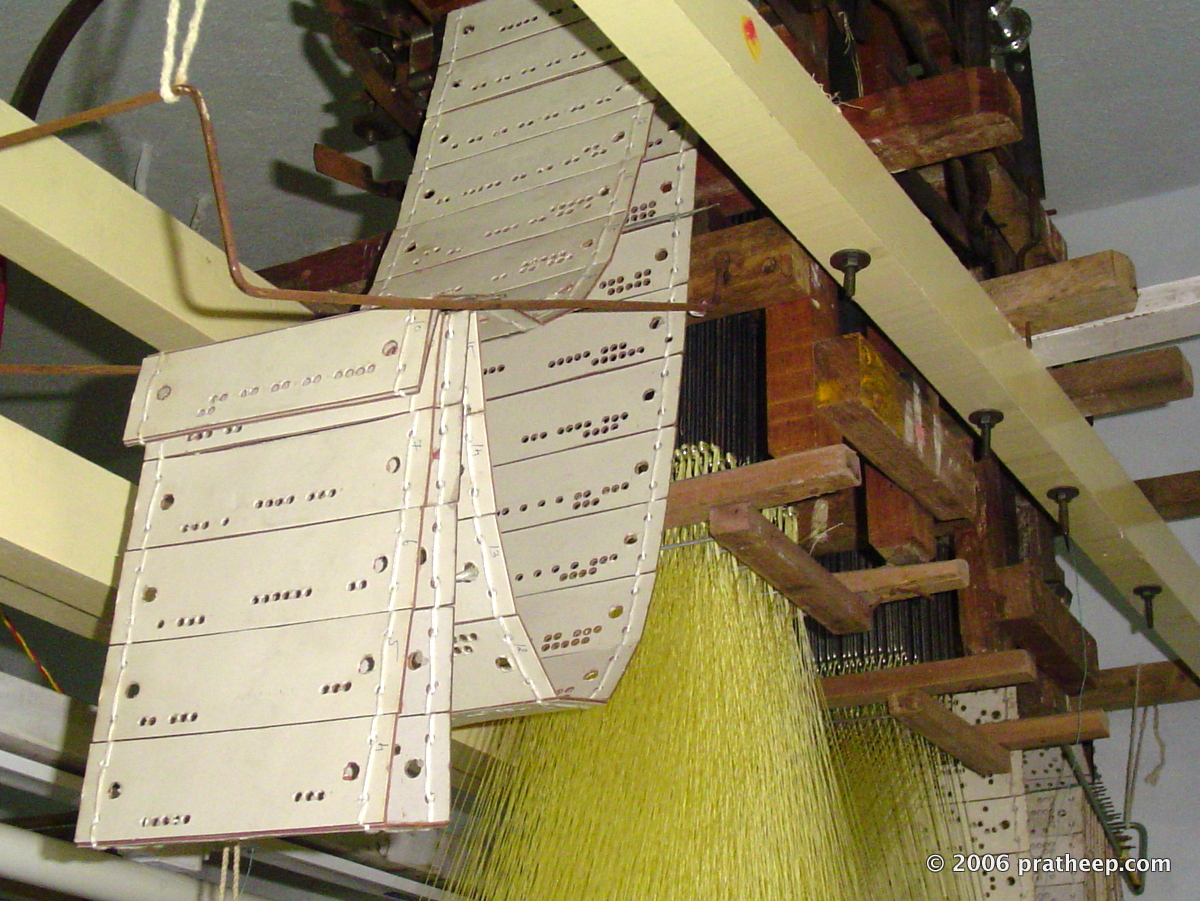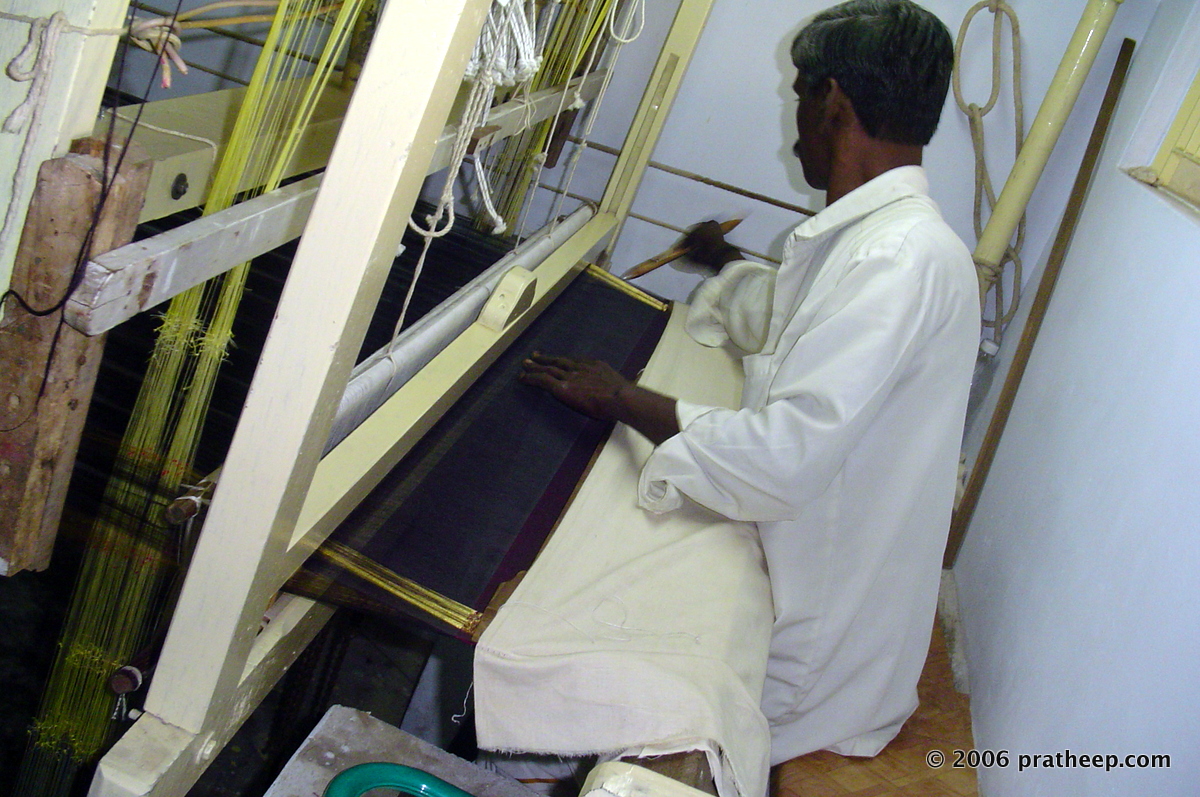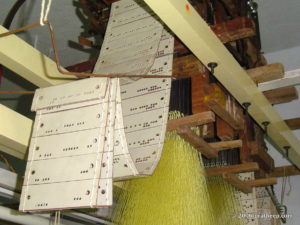Bug
Bug, Debug and little bit of Kanchipuram.
My first student seminar topic was 'Jacquard Loom'.
The professor who taught us Computer Architecture and Computer Organization (everyone called it CAR & COR), asked the class to discuss the history of computing. So I took this subject.
This was in 1992 ( Windows 3.x days!).There was no Google then to research, the only respite was books in the library. The red-color paperback 'Hamacher Zaky' was the most popular on computer organization. There were a few other books on the history of computing.
I spoke about how punchcards were used in the early programming in the 18-19th century.
This was not used in computing, but used to 'code' and reproduce designed pattens in the Jacquard programmable looms.
I've never seen a loom then. I Photocopied pictures of the Jacquard loom and punchcards from the books to make the seminar report.I think, I photocopied on A4 sizes OHP transparencies for projecting the picture in the class.
One part of my seminar was about the origin of the term -'Debug'. What a bug has to do with software programing?
It was a phenomenally (un)popular jargon among the programing community then, as it is now.
The first use of the term bug ( or debug) in engineering space is attributed to Grace Hopper, a US naval officer. In the 1970s, she was working on a Mark II Computer. Her associates discovered a moth that was stuck in a relay, limiting the operation of the relay.
There is a famous picture of this 'bug' taped on to their report as evidence - in today's terms a 'bug report'!
While the phrase "debugging" was never used in their logs, this case was held as an instance of "debugging."
Back to the loom.
About 14 years after this seminar, I happened to see - for the first time - a Jacquard loom. It was in Kanchipurm, the small town popular for the traditional Kanchipuram Silk production.
There was this local version of Jacquard loom everywhere in the village. The programming punchcard chains - holding the exotic Kanhipuran Sari designs - hovering over all the looms.
I saw someone clearing the blocked holes of the punched cards chain, using a toothpick like needle.
I asked, what was he doing?
"Debugging!". Came the answer,of course in chaste tamil.
He explained, the punched cards deck he's clearing now has been in the cupboard for long (for years, for rarely used designs). Bugs get trapped or make nest inside the holes, making the pattens go haywire, once loaded into the loom.
So he goes through meticulously, a chain of close to 100 cards, that holds the design of a particular sari design.
While Grace Hopper and her crew 'reported' the first bug, by pasting the evidence, the true debugging in programming is atleast 100 years older than their 'bug report'.
Get to Kanchi. You may be luck to see the debugging, as it probably had been done in France's loom industry in the 1830s.

Loom in Kanchi loaded with punched card
| Loom in Kanchi loaded with punched card
These obscure looking holes on the cards, holds exotic designs of the sari

Jacquard loom
| Jacquard loom
Kanchipuram version of the programmable loom

Kanchipuram Silk Sari Making
| Kanchipuram Silk Sari Making
The weaved portion is covered under the white cloth!

Silk Weaving
| Silk Weaving
Manual loom in Kanchipuram

Kanchipuram Signpost
| Kanchipuram Signpost
GALLERY
Loom in Kanchi loaded with punched card

Loom in Kanchi loaded with punched card
These obscure looking holes on the cards, holds exotic designs of the sari
Jacquard loom

Jacquard loom
Kanchipuram version of the programmable loom
Kanchipuram Silk Sari Making

Kanchipuram Silk Sari Making
The weaved portion is covered under the white cloth!
Silk Weaving

Silk Weaving
Manual loom in Kanchipuram
Kanchipuram Signpost



























